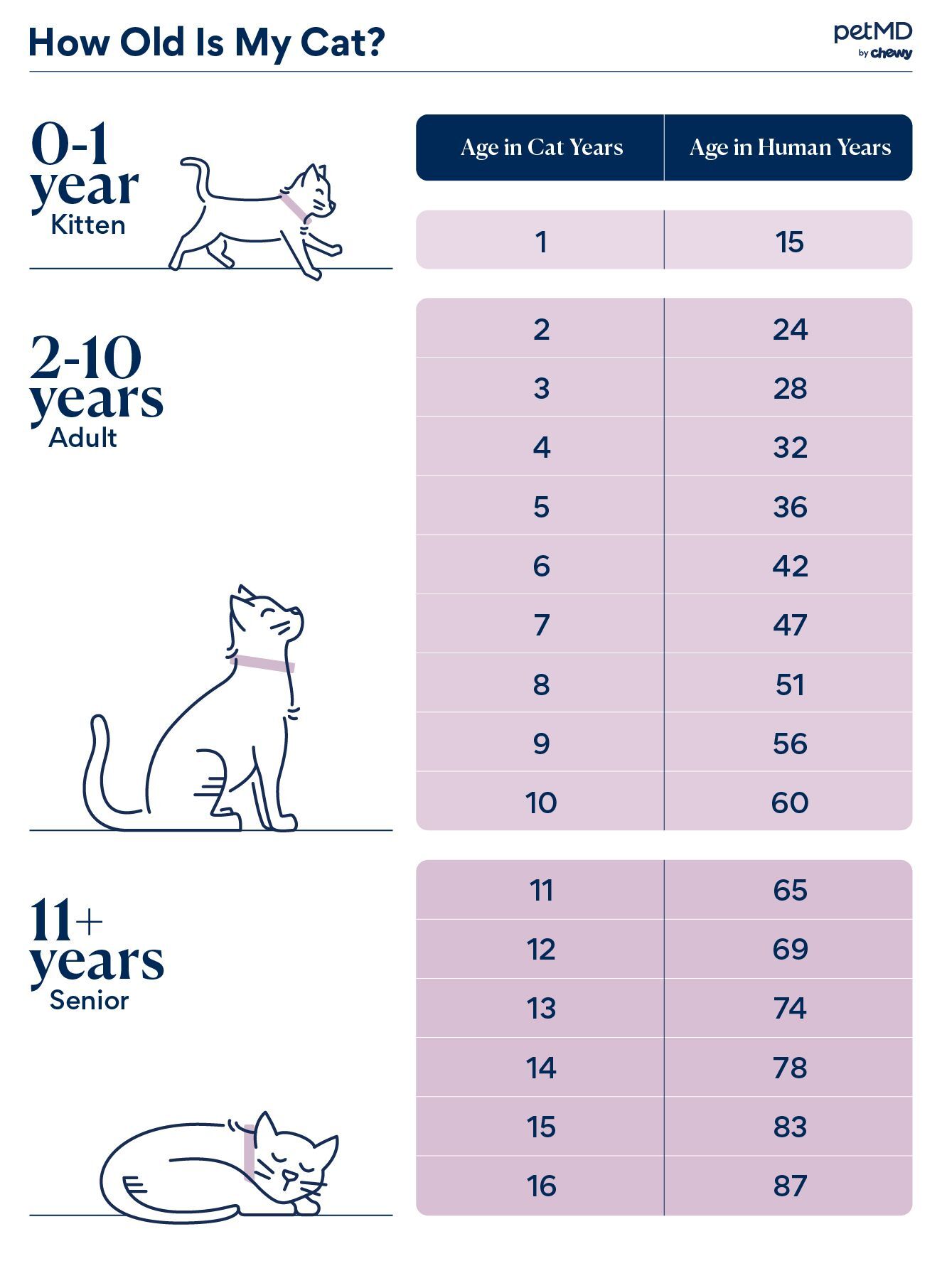Cat Age Chart: How Old Is My Cat in Human Years?
Cat parents love to celebrate their furry companion’s birthday. After all, your cat is more than just a pet—they’re part of your family. But a yearly celebration doesn’t really match a cat’s aging process, which varies over their lifetime.
"Converting cat years to human years allows us to compare our cat’s aging process and our own,” says Mary Gardner, DVM, a veterinarian and co-founder of Lap of Love Veterinary Hospice. “When we’re in our senior years, we might have a difficult time getting around. A cat who’s 11 years or older—which is 60 years in human years—may experience the same struggle.
So, how do you calculate your cat’s age in human years?
Key Takeaways
- Cats reach the equivalent of 15 human years in their first year of life.
- Cats age at a relatively similar rate no matter their breed.
- Veterinarians can use various health indicators to determine a rough estimate of age if a cat’s birthday is unknown.
How Many Cat Years Are in a Human Year?
Determining your cat’s age in human years isn’t as simple as multiplying their age times seven.
According to the American Veterinary Medical Association (AVMA), cats reach the equivalent of 15 human years in their first year of life and 24 human years by their second. After their second birthday, our fur babies start to age about four human years for every cat year.
Cats age at a relatively similar rate no matter their breed.
How To Find Your Cat’s Age
When you’ve adopted a cat, you may celebrate their "gotcha day" rather than their birthday, since you typically don’t have all the details of their past. However, your cat needs age-specific care, so it’s important for you and your veterinarian to have a rough idea of their age.
Fortunately, there are a few ways veterinarians can estimate your cat’s age. They may look at:
- Teeth. Cats begin developing baby teeth (deciduous teeth) at three to four weeks of age and have a full set of teeth by six to seven weeks, according to Advanced Animal Dentistry. At around three months, they lose their deciduous teeth. By six or seven months, they have 30 adult teeth. Dental development is the best way to determine age. However, your veterinarian can still use clues such as wear and tear and tartar buildup to estimate your cat’s age.
- Coat and skin health. Healthy aging may include a slight dullness of the coat and a decrease in skin elasticity. When older cats experience joint or dental pain, they may groom less frequently.
- Muscle condition. Cats lose muscle mass as they age, particularly along their spine, shoulder blades, and thighs. To estimate age-related muscle loss in cats, veterinarians often refer to the World Small Animal Veterinary Association (WSAVA) Muscle Condition Scoring Chart. Your veterinarian can also evaluate your cat for mobility issues or joint pain.
- Eye health. Your veterinarian may examine your cat’s eyes to help determine their age. You can determine their age by the lens in their eyes. Senior cats may also experience iris degeneration or develop a slight cloudiness in their eyes.
How Long Do Cats Live?
With advancements in medical care, improved nutrition, and the evolving bond between humans and cats, beloved feline companions are living longer than ever.
“The average lifespan of a cat is about 12 to 15 years. On average, purebred cats live about 12.5 years and crossbred cats live a bit longer, about 14 years,” Gardner explains.
Understanding your cat’s age allows you to give your fur baby great care at every stage in their life.
Featured Image: iStock/Drazen_

